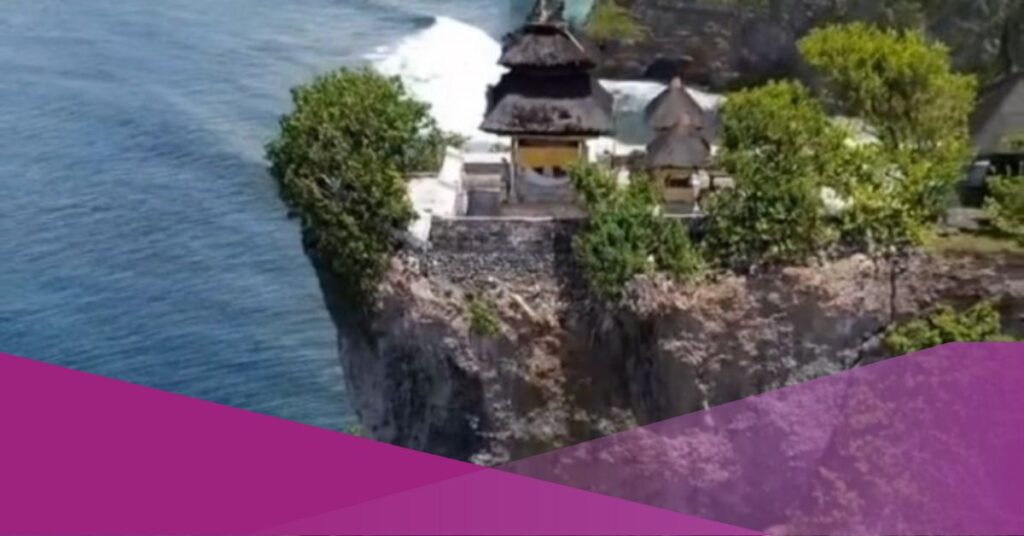Bali’s iconic Pura (Luhur) Uluwatu temple, a revered spiritual site established in the 11th century, is facing a looming threat as a significant fissure has now become visible on the south face of the cliff promontory supporting the temple. The emergence of this potentially dangerous situation has raised concerns among worshippers and authorities alike that the temple, perched 70 metres above the Bali Sea, might be at risk of toppling.
In response to this alarming development, local officials have taken immediate action to safeguard the temple and the safety of those who visit it. A comprehensive monitoring effort is now underway, with stringent limitations on the number of visitors and worshippers permitted on the peninsula at any given time.
Speaking on Saturday, the 9th of September, 2023, I Made Sumerta, the Village Chief (Bendesa) of Pecatu, reassured the public that precautionary measures were being implemented. “Following the condition of the rock cliff face showing signs of a fissure, the number of worshippers will now be limited,” Sumerta announced.

To mitigate the risk, the maximum number of worshippers allowed to make offerings at the temple’s main prayer area, known as the Utama Mandala, has been significantly reduced to a range of 30-50 individuals. This marks a substantial decrease from the previous capacity, which could accommodate more than 75 people. The Madya Mandala, the mid-temple area preceding the main temple, can still host up to 400 worshippers.
The cause of this fissure is under scrutiny, and there is suspicion that it may be related to a powerful 7.6 magnitude earthquake that struck on Tuesday, the 29th of August, 2023. This seismic event was centred near South Kalimantan but was felt in Bali, potentially contributing to the widening of the existing crack in the cliff wall.
It’s worth noting that the presence of a “crack” in the cliff face had been a matter of public awareness for several years and had been reviewed by both spiritual and government leaders. The following steps in addressing this critical issue will depend on the findings of ongoing studies, with any necessary structural repairs and improvements contingent on budgets allocated by the Badung Regency Administration.
Despite the gravity of the situation, local authorities are determined to prioritise the safety, comfort, and confidence of those who continue to come to pray at this culturally and spiritually significant temple. As the situation unfolds, they remain hopeful that a solution to the fissure in the cliff face can be achieved swiftly, ensuring the preservation of Bali’s cherished Uluwatu temple for generations to come.
Interested in this topic? Check out our other articles from Social Expat:






























